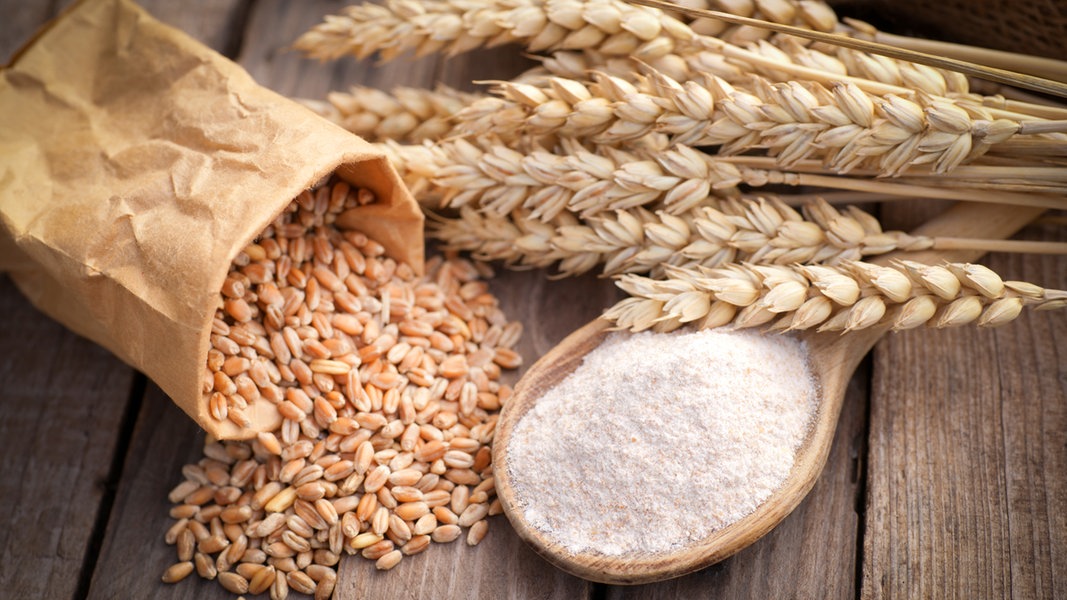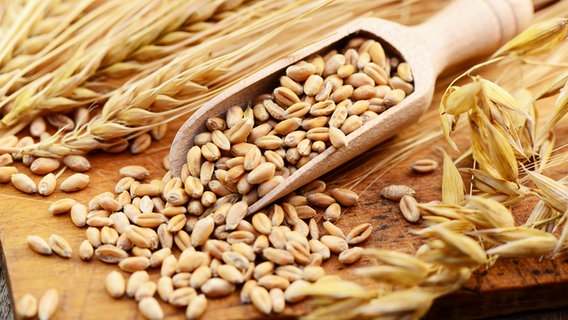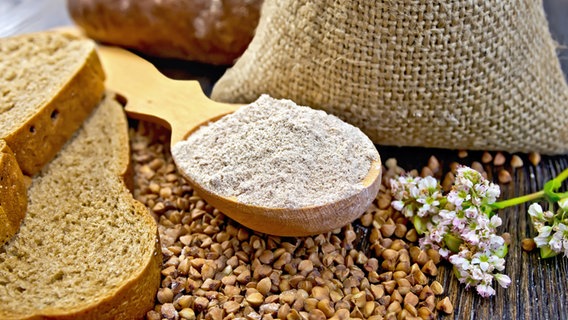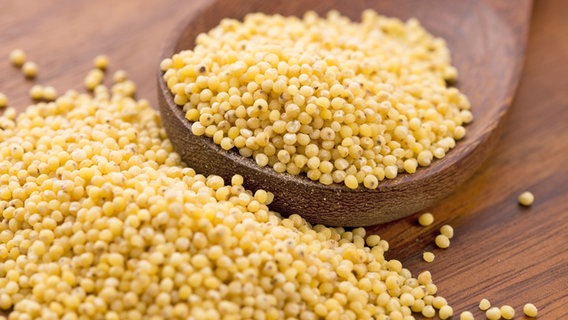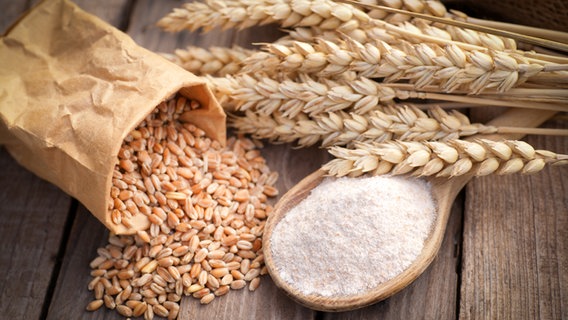Status: 05/26/2023 4:05 p.m
Wheat provides important nutrients, but the grain can also make you ill: celiac disease, wheat allergy, wheat sensitivity, inflammation. When is wheat unhealthy and how does it become digestible?
Wheat is a classic bread grain. In fact, along with corn and rice, it is the most important grain for feeding the world‘s population. There is a lot of nutrition in the grain of wheat:
- The shell contains minerals, fiber and numerous vitamins.
- The endosperm provides mainly starch and (gluten) protein.
- The seedling is a valuable source of numerous nutrients, including polyunsaturated fatty acids, many vitamins (especially vitamin E), minerals and trace elements.
In the form of pastries, pasta, couscous and co., wheat products are an integral part of our everyday lives. And yet the grain has recently fallen into disrepute: it is said to make you stupid, fat and sick. In fact, observational studies have linked high wheat consumption to diseases such as obesity, type 2 diabetes, cardiovascular disease and cancer. Wheat is also suspected of promoting autoimmune processes, chronic inflammation and intestinal diseases.
Effect of wheat in the body still under research
But is “the wheat” really to blame for the diseases mentioned? Are spelled, kamut and co. healthier – or does the type of processing play a role or what other lifestyle factors the test subjects brought in? Much research work is still to be done. Double-blind long-term studies in this area are difficult to carry out: one group would only have to eat wheat for years, while the other would only consume spelt, for example.
What is certain is that some people react to certain wheat components. Wheat is particularly unhealthy if it is not tolerated, for example due to a wheat allergy or gluten intolerance (celiac disease).
Celiac disease: When wheat and related grains make you ill
The gluten protein is a natural component not only of the wheat grain, but of many types of grain. Rye, spelt and barley, for example, also contain gluten, as do ancient grains such as einkorn and emmer. People with a proven gluten intolerance react with an autoimmune reaction when they come into contact with gluten. They form antibodies that attack their own tissue and destroy the intestinal villi. This causes diarrhea and similar symptoms. Those affected must avoid the types of grain mentioned and also be careful with finished products because gluten could be part of the recipe. Celiac disease occurs in about half a percent of the population, and the trend is rising. Special auto-antibodies are found in the blood of those affected.
Wheat allergy: spelled is not an alternative
In addition to celiac disease, wheat allergy is another clinical picture associated with cereals. In a broader sense, this also includes the so-called baker’s asthma when inhaling flour dust. Less than half a percent of the population is affected. As with all food allergies, the symptoms are very diverse. Among other things, a bloated stomach, diarrhea, abdominal pain or exhaustion are typical. Swelling and itchy skin can also occur. An allergy to wheat proteins can be detected using various allergy diagnostic methods, such as IgE antibody tests.
Those affected must avoid the allergen – wheat in all its forms such as bulgur, couscous, pasta, preparations in processed products. As a rule, this also applies to types of grain that are similar to wheat: emmer, einkorn, kamut, khorasan, unripe spelled, spelt. Although spelled has a better reputation than commercial wheat, the Federal Institute for Risk Assessment (BfR) but sees no difference in allergenic potential that has been proven by studies: “In addition, there is a relatively high degree of agreement between spelled and soft wheat in the potentially allergenic components (protein molecules), which is why a similar allergenicity can be expected.”
Alternatives for people with wheat allergies include products made from oats, corn, millet, rice, pseudocereals such as buckwheat, quinoa or amaranth, or legumes. Rye and barley can also be tolerated.
Wheat sensitivity: complaints, although neither allergy nor celiac disease is present
There are people who neither have celiac disease nor a wheat allergy and still have problems when they eat wheat or other grains containing gluten. You may suffer from wheat sensitivity, also called non-celiac non-allergy wheat intolerance. The symptoms are varied – from gastrointestinal complaints to fatigue. The diagnosis can be made if there is clinically an inflammatory reaction of the intestinal mucosa to wheat gluten, but neither an autoimmune reaction nor an allergy can be detected. The number of cases of wheat sensitivity is increasing, but the cause is not yet clear. Various triggers for the symptoms are discussed – in particular ATI, FODMAPs (irritable bowel syndrome) and a bacterial one Intestinal overgrowth (SIBO).
ATI: Certain proteins in wheat intolerable?
In connection with modern, resistant wheat breeds, so-called alpha-amylase trypsin inhibitors (ATI) were frequently mentioned as causing disease. These are specific proteins. They protect the plant from predators and play an important role in germination. ATI are suspected of having a similar damaging effect on the human digestive tract as on insects and triggering inflammation there – with symptoms such as abdominal pain, diarrhea, headaches and dizziness as a result.
However, there is considerable variation in ATI content in wheat. In addition, ATI are not only found in wheat, but also, for example, in spelt, barley, millet, buckwheat and soybeans. ATI are not yet detectable in the human body.
FODMAPs: Do certain carbohydrates trigger the symptoms?
FODMAPs are also repeatedly mentioned as triggers for wheat intolerance. These are certain carbohydrates, such as fructans and fructose. If FODMAPs are not processed properly in the small intestine, this can lead to digestive problems, gas formation and other symptoms such as joint pain or headaches – also known as irritable bowel syndrome.
However, just like ATI, FODMAPs are not only found in wheat, but in a number of other foods. The clinical picture would therefore not be specifically attributable to wheat.
Prevent wheat intolerance?
Nutritionists do not recommend healthy and normal-weight individuals to avoid wheat or certain grain components such as ATI, FODMAPs, or gluten. It is important not to mix up wheat flour and white flour. As a rule, it is advisable to use whole grain instead of white flour, i.e. the more nutritious flour. This applies equally to all types of grain. The higher the type number of a flour on the package, the more healthy minerals and fiber it contains. Because many of the nutritious substances are not in the endosperm, but in the germ and in the outer layers. When eating wholemeal flour, the blood sugar level rises more slowly, and the fiber it contains does a lot of good for the intestines.
Compatibility: Slow processing and dough handling are important
Another factor for the compatibility of baked goods made from wheat and other grains is the preparation. If the dough rises longer, the bread will be more digestible. It can help people with intolerance problems to bake themselves and give the dough time: the usually slower dough process in traditional baking is a thing of the past Research by the University of Hohenheim is the reason why the components in the bread that cause the symptoms have already been broken down by the time it is baked.
experts on the subject
Further information

